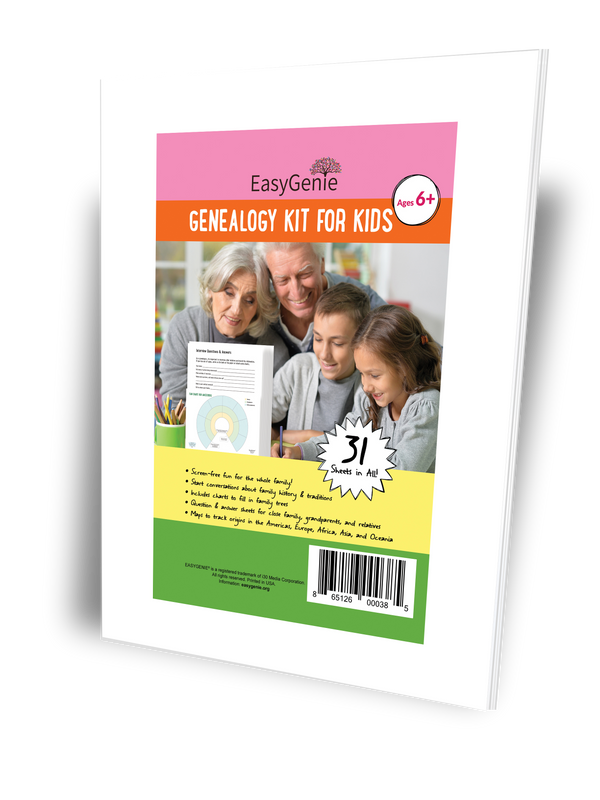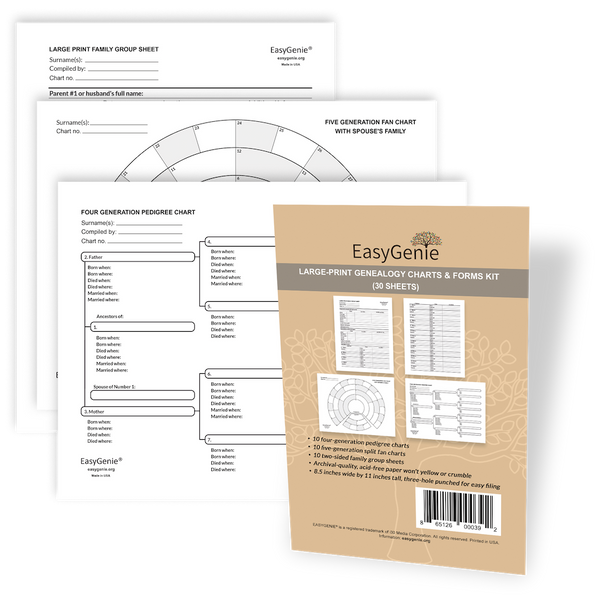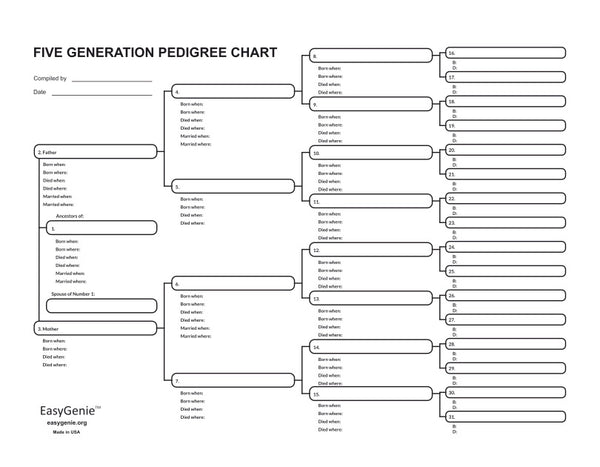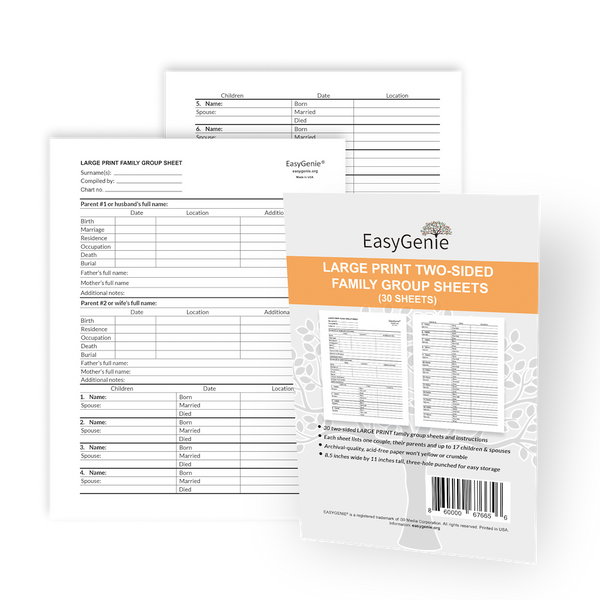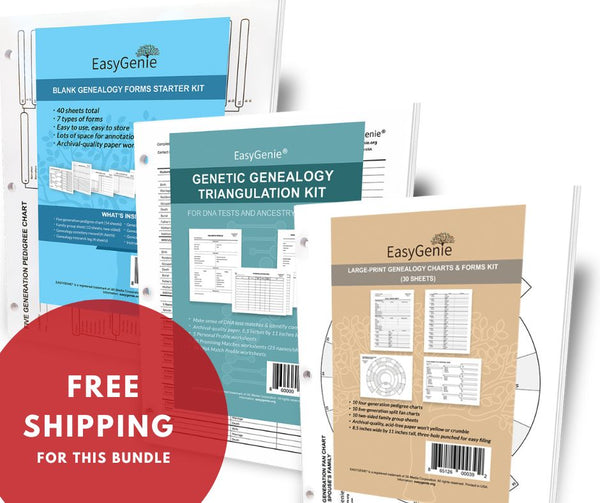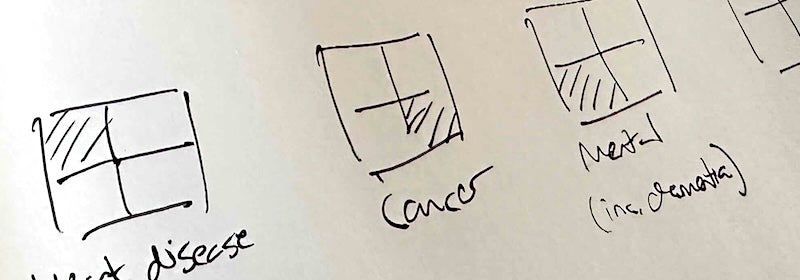
Designing a better medical genogram for genealogy
Ian LamontEvery year, EasyGenie releases new charts for genealogists. Last year, there were new fillable PDFs, including Family Group Sheets (Aramis), the 6-generation Pedigree Chart (Aramis), and the free 1870 Census tracker (Helvetica). The year prior, we launched new sets consisting of high-quality paper sheets, such as the Large Print Charts & Forms Bundle.
This year, we are on track to launch more PDFs of existing paper forms. But there’s another important project: medical genograms, a type of genealogy chart that can help track family health history. You can see a sample below, from a 2021 article in American Ancestors (the magazine of the New England Historic Genealogical Society). The article is paywalled, but there is an earlier Vita Brevis blog post here.

The 2021 NEHGS article notes, “A genogram can offer valuable insight into how your history, environment and habits have interacted to shape who you are today.” Genograms have also been used in the medical field to assess disease risk and mental health across the generations.
Unfortunately, genograms have drawbacks. Software tools are hard to use and look like technical drawings. Genograms can only show a limited number of health conditions at one time.

In addition, while the focus is on medical conditions, the tools often overlook other data that’s important to genealogists:
- Documentation such as death records and census data
- Cross-referencing other family groups
- DNA relatives
But these drawbacks also point to an opportunity for improvements. We’ve already started sketching out some ideas:
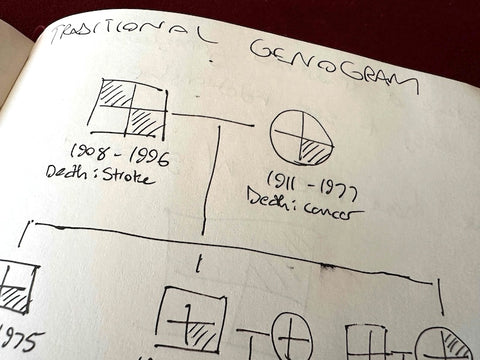
We don’t know what the final design of the genogram kit will look like, or when it will be released.
One thing for sure, though: Like all EasyGenie charts and forms, we intend to deliver high quality forms with unique features that can help genealogists protect and preserve their research, and better understand their family history. Stay tuned!


